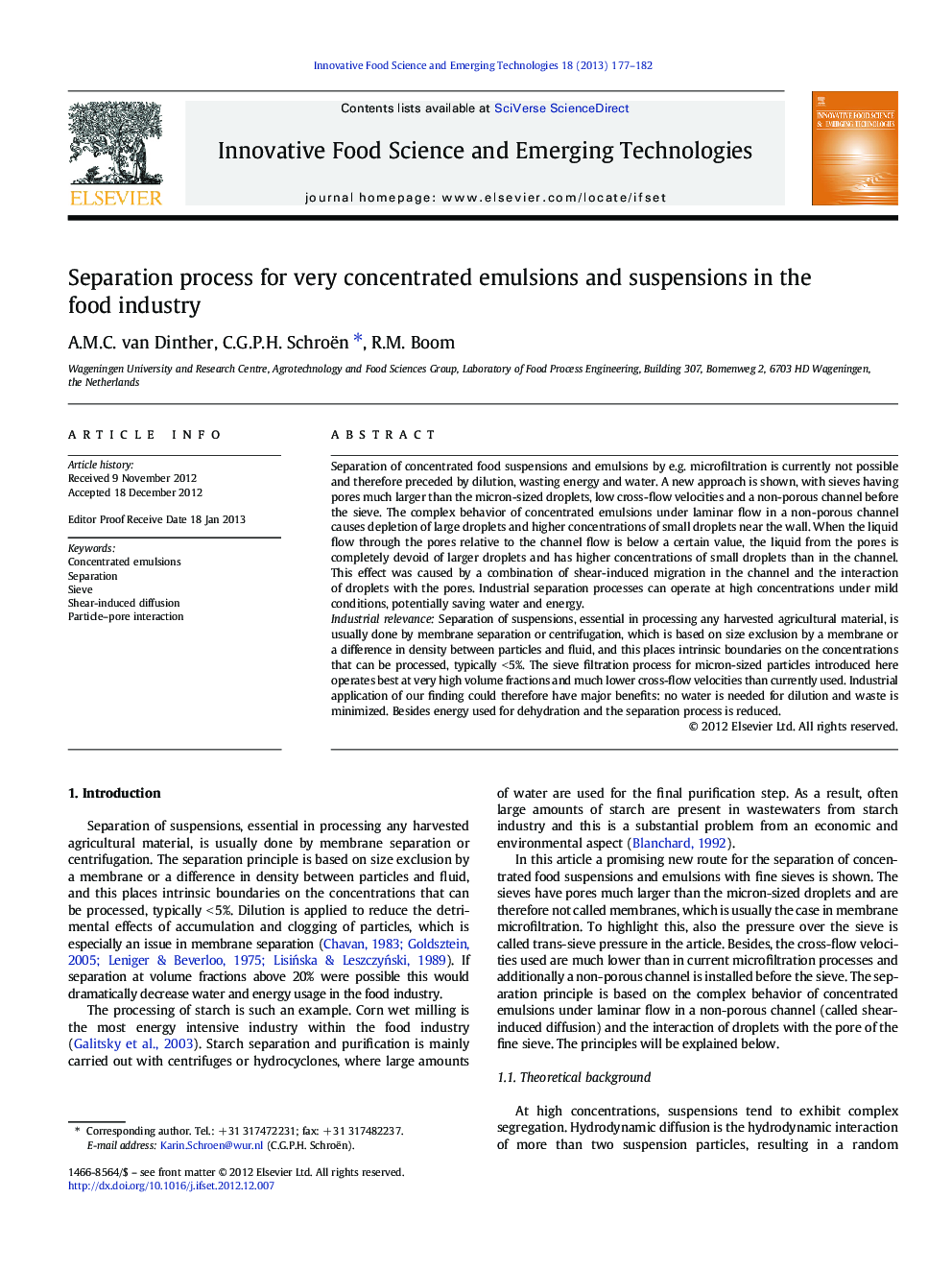| کد مقاله | کد نشریه | سال انتشار | مقاله انگلیسی | نسخه تمام متن |
|---|---|---|---|---|
| 2086797 | 1545548 | 2013 | 6 صفحه PDF | دانلود رایگان |

Separation of concentrated food suspensions and emulsions by e.g. microfiltration is currently not possible and therefore preceded by dilution, wasting energy and water. A new approach is shown, with sieves having pores much larger than the micron-sized droplets, low cross-flow velocities and a non-porous channel before the sieve. The complex behavior of concentrated emulsions under laminar flow in a non-porous channel causes depletion of large droplets and higher concentrations of small droplets near the wall. When the liquid flow through the pores relative to the channel flow is below a certain value, the liquid from the pores is completely devoid of larger droplets and has higher concentrations of small droplets than in the channel. This effect was caused by a combination of shear-induced migration in the channel and the interaction of droplets with the pores. Industrial separation processes can operate at high concentrations under mild conditions, potentially saving water and energy.Industrial relevanceSeparation of suspensions, essential in processing any harvested agricultural material, is usually done by membrane separation or centrifugation, which is based on size exclusion by a membrane or a difference in density between particles and fluid, and this places intrinsic boundaries on the concentrations that can be processed, typically < 5%. The sieve filtration process for micron-sized particles introduced here operates best at very high volume fractions and much lower cross-flow velocities than currently used. Industrial application of our finding could therefore have major benefits: no water is needed for dilution and waste is minimized. Besides energy used for dehydration and the separation process is reduced.
► Concentrated emulsions up to 50% can be fractionated.
► Inter-particle and particle-pore interactions induce separation.
► Zero permeation of large and enhanced permeation of small droplets
► The separation process operates at industrial fluxes without fouling.
► Processing of concentrated emulsions results in energy and water savings.
Journal: Innovative Food Science & Emerging Technologies - Volume 18, April 2013, Pages 177–182